ACUTE CARE
Patient Safety
West-Com’s highest priority is improving patient safety. A patient who is in a hospital for a four-day stay may interact with fifty different employees, including physicians, nurses, technicians, and others. Keeping team members, the patient and their family members informed regarding the patient’s care plan, status, precautions, allergies, ongoing treatments and medications improves the patient’s safety and healthcare quality. West-Com’s solutions are designed to facilitate patient care continuity and safety for all involved with the patient’s care and help protect patients from errors, injuries, accidents, and infections.

Patient Falls
Inpatient fall prevention has been an individual area of concern for nursing for almost fifty years. Traditional hospital-based incident reports deem all inpatient falls to be avoidable, and therefore falls are classified as adverse events. Here are some statistics about falls in healthcare facilities:
- Every year in the United States, hundreds of thousands of patients fall in hospitals, with 30-50 percent resulting in injury.
- Injured patients require additional treatment and sometimes prolonged hospital stays. In one study, a fall with injury added 6.3 days to the hospital stay.
- The average cost for a fall with injury is about $14,000.
Here are the fall prevention safety features available with Novus® Connect.
- Use workflow stations to schedule hourly and environmental rounds. Staff members can be notified by text message and visually on CareBoards if rounds are overdue.
- Connect the patient bed (wired or wireless) to the nurse call system to monitor if the bed is in compliance or if the patient is moving off the bed. Novus® Connect integrates Stryker, Linet and Hill-Rom Beds.
- Record the results of the patient’s fall risk assessment using the workflow station, or import the results from the EMR. An icon can represent fall status and be displayed outside the patient’s room, in the patient’s room and on the Unit CareBoards.
The bathroom assistance button allows patients to notify the caregiver that the patient needs to get out of bed. An assist button, in addition to the emergency pull cord in the patient’s bathroom, allows the patient to notify their caregiver when they need help returning to bed. Caregivers can speak directly to the patient in the bathroom from their wireless devices when they receive the assist message to let the patient know they are on their way.
Patient Falls
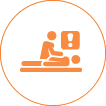
Medical Errors
One in three patients admitted to the hospital will experience a medical error, per Health Affairs. An adverse drug event is the most common type of preventable harm. West-Com’s 5 care point solution helps reduce the risk of preventable medical errors from occurring.
- Enroll the patient and their family to be involved in their care plan. Use the Patient CareBoard™†† to display precautions, allergies, medication use and care plan.
- Use the workflow station to notify staff members of precautions, allergies and condition.
- The Unit CareBoard™ notifies all staff members regarding the status of each patient.
- Receive patient care informationupdates through EMR integration for use on CareBoards and workflow stations.
- Display important patient care precautions outside the patient’s room using electronic signage.
†† Patent Pending
Medical Errors
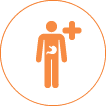
HAPU’s
Hospital-Acquired Pressure Injures (HAPIs) cost an estimated $9.1-$11.6 billion each year with an estimated treatment cost of $2,000 – $20,000 per injury depending on its severity. Lawsuits over HAPIs are increasing with the average settlement of $250,000. Use the West-Com workflow station to set the results of the skin risk assessment tool for each patient and be reminded about daily skin assessments, moisture management, nutrition and hydration optimization. This will also post HAPI precautionary icons both outside and inside the patients’ rooms as well as on the Unit CareBoards.
HAPIs
Patient & Family Engagement
Engaging patients and family members in their healthcare can lead to measurable improvements in safety and quality of care, but it can also present challenges. Caregivers need the right set of tools and resources that allow them to successfully implement and sustain engagement initiatives.
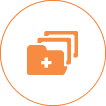
Higher HCAHPS Scores
Organizations that engage patients and families receive higher patient care ratings, achieve better patient outcomes, have lower preventable readmissions, and increased compliance with medication and careplans.West-Com’s solutions specifically addressesnine HCAHPS questions and are designed to improve your patient care experience score. Ask us for the document, “7 Ways to Improve your HCAHPS Results!”
Higher HCAHPS Scores

Better Health Outcomes
Engaged patients have better pain control and symptom resolution, better emotional health, significantly fewer preventable hospital readmissions, better management of chronic diseases, and overall improved functioning. West-Com’s engagement solutions can also reduce patient anxiety by visually acknowledging a patient’s request for assistance using the nurse call system. It can also answer patients’ most frequently asked questions, such as, “Is it time for my pain meds?”, “What is my goal today?”, “Who is my nurse?”, or “When do I have Physical Therapy?”. The result is an educated patient that demands less time from caregivers. See how you can customize the Patient CareBoard™ for your organization.
Better Health Outcomes

Lower Healthcare Costs
When caregivers engage patients and families, they make more informed choices about their care, use medications more safely, practice more effective self-management, contribute to infection control initiatives, and help reduce medical errors. Together, these benefits can substantially lower healthcare bills. The Patient CareBoard™, Unit CareBoard™ and West-Com’s workflow station work together and provide organizations the tools needed to successfully engage patients and families. EMR, ADT and Staff Directory integrations provide seamless information flow from multiple hospital systems into one powerful solution.
Lower Healthcare Costs
Communication and Collaboration
Ineffective communication significantly impacts patient safety and the quality of care provided. Joint Commission reveals that communication failures were implicated at the root of over 70 percent of sentinel events. West-Com is creating new innovative tools to facilitate communication among care teams to drive better patient outcomes.

Staff Communication
Enhanced communication among healthcare provider teams has been shown to greatly improve the teams’ understanding of goals of care and decrease length of facility stays. Tools such as West-Com’s Patient CareBoard™, workflow station, and Unit CareBoard™ keep team members informed about changes in the patient’s condition, care plan and daily care goals. Integrations with wireless devices allow for easy messaging and voice communication with patients and staff members. RTLS integration provides a simple way to locate staff members in a facility. Care reports can be emailed to staff members at the end of a shift.
Staff Communication

Staff Satisfaction
Human factors, such as the effects of stress and fatigue, affect the quality of care that patients receive and staff satisfaction levels at work. Using healthcare technology to reduce interruptions and distractions that staff members face daily can ease these effects. Tools that reduce patient calls, predict patients’ needs, enhance staff members’ communication and integrate with other healthcare systems allow caregivers to spend more time caring for their patients, positively affecting patient outcomes and raising their work satisfaction levels.
Staff Satisfaction

Response Time
Responsiveness is more than how quickly a patient’s call is answered. It is about meeting the needs of the patient when or before they need it. This requires a solution that brings purposeful information to the care provider in a timely fashion to assist them with their daily workflow. Some of this information is requested from other hospital systems and integrated throughout the communication, workflow and patient safety solutions. West-Com’s enhanced and integrated solution connects nurse call, wireless devices, workflow stations, CareBoards, EMR, ADT, Staff Directory, RTLS and other hospital systems to provide a complete patient-centered care experience.
Response Time
Streamline Workflow and Staff Experience
A strong communication infrastructure is crucial to ensure patient safety, streamline workflow, increase patient satisfaction, improve patient engagement and retain experienced caregivers. Our effective workflow tools encourage patient engagement, collaboration, clinical best practices and staff communication.
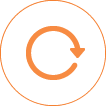
Rounding
Engaged patients have better pain control and symptom resolution, better emotional health, significantly fewer preventable hospital readmissions, better management of chronic diseases, and overall improved functioning. West-Com’s engagement solutions can also reduce patient anxiety by visually acknowledging a patient’s request for assistance using the nurse call system. It can also answer patients’ most frequently asked questions, such as, “Is it time for my pain meds?”, “What is my goal today?”, “Who is my nurse?”, or “When do I have Physical Therapy?”. The result is an educated patient that demands less time from caregivers. See how you can customize the Patient CareBoard™ for your organization.
Rounding

Care Reminders and Requests
Today’s healthcare is a complicated environment where caregivers face multiple interruptions and distractions on an hourly basis. One study conducted in seven patient care units in two Midwestern hospitals showed that nurses were interrupted at least ten times per hour. Well-designed technology allows nurses to stay focused on the patient, family, and caregiving amid distractions. West-Com’s workflow stations aide caregivers by reminding them when to complete important tasks and allowing requests to be sent to other departments. Requests can also be sent directly from the nurse console.
Care Reminders and Requests

Patient Satisfaction
Every hospital department can impact the patient experience and perception of care that patients receive. This means an environment of strong communication and collaboration is required to greatly improve patient satisfaction. Patients do not seem to care if it is in the middle of a shift change. They often judge how carefully nurses listen to them by how quickly nurses respond to their clinical and non-clinical requests. Additionally, patients do not always remember what was explained to them or when they placed a request. West-Com provides both workflow and communication tools that make it easy for caregivers to request a bathroom to be cleaned and a room to be stocked. West-Com’s Call Assurance® provides patients peace of mind that their request has been received .
Patient Satisfaction
Patient Care Experience

Information and Education
Understanding and setting patients’ expectations is important for achieving high patient care experience results. Keeping the patient informed and educated regarding their care plan, daily goals and care schedule helps alleviate anxiety and improves the patient’s perception of care. Use of West-Com’s workflow station allows caregivers to set rounding reminders to ensure that they meet care schedule expectations. The Patient CareBoard™ can be configured to display the care plan, daily goals and scheduled appointments with other departments, such as imaging or physical therapy. Use of the enhanced pillow speaker allows patients to directly request a CNA for help to the bathroom or a nurse for pain assessment.
Information and Education
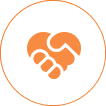
Respect for Patients’ Preferences
Every hospital department can impact the patient experience and perception of care that patients receive. This means an environment of strong communication and collaboration is required to greatly improve patient satisfaction. Patients do not seem to care if it is in the middle of a shift change. They often judge how carefully nurses listen to them by how quickly nurses respond to their clinical and non-clinical requests. Additionally, patients do not always remember what was explained to them or when they placed a request. West-Com provides both workflow and communication tools that make it easy for caregivers to request a bathroom to be cleaned, new linens to be delivered and for patients to see when they placed a request through the nurse call system.
Respect for Patients’ Preferences

Continuity and Transition
A patient who is in a hospital for four days may interact with up to fifty different employees. Hand-over communication relates to the process of passing specific patient information amongst caregivers as patients move between areas of diagnosis, treatment and care, or staff changes at the end of a shift. These transition times introduce safety risks to the patient because important information regarding the patient’s care may be accidentally omitted or misunderstood. Communication technology can play an important role in improving hand-over effectiveness, reducing patients’ safety risks during this transition time. West-Com’s Patient CareBoard™ makes it easy to involve patients and families in the care process by displaying essential information, such as:
- Prescribed medications, doses, and time required between medications
- Next steps in the patient’s care plan so they can communicate to other care team members if necessary
- Names of providers during each shift and who to contact if there is a concern about safety or quality of care
The hospital healthcare environment is complex and can be confusing. Patients and families often don’t hear or understand things the first time they are explained. A communication tool like the Patient CareBoard™ can help bring clarity to the situation for patients, family members, and healthcare professionals.
Continuity and Transition
Acute Care
Acute Care
Hospitals, Medical Centers, Critical Access Hospitals
